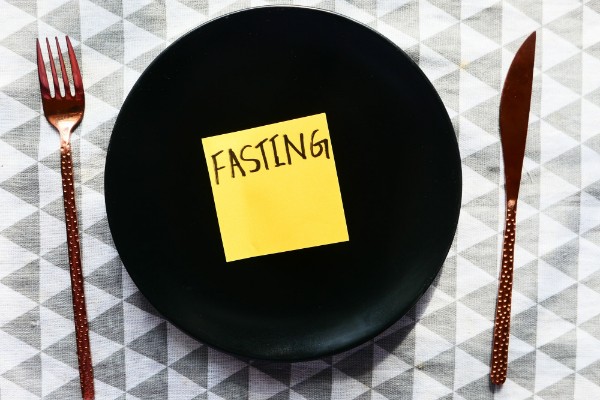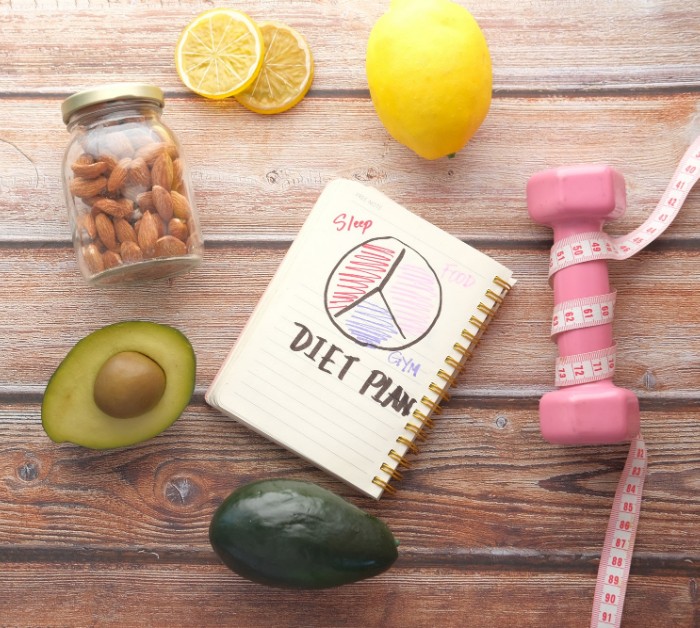What is alternate day fasting and how to do it for the best weight loss results?
Alternate day fasting is a form of intermittent fasting. You fast every other day and you eat what you want on non-fasting days. The secret of this type of eating is that you can consume some food on your fasting days.
Want to lose some weight and you’re tired of all those diets where you have to eat at a specific time, count calories, and eat just certain types of food? If the answer is yes, then this type of intermittent fasting may be the right choice for you.
Here we will present to you what is alternate day fasting, how to start fasting every other day, how much weight can you lose, and what to eat on fasting days.
This post may contain affiliate links, which means we may receive a small commission, at no cost to you, if you make a purchase through a link. For more information, please see our disclosure.
What is Alternate Day Fasting?

Alternate Day Fasting (ADF) is a form of intermittent fasting that involves consuming significantly fewer calories than usual every other day. Or simply said on this diet you fast every other day and eat whatever you want on the non-fasting days.
If you are new to intermittent fasting and want to learn the basics and how it works here is a further reading for you: What Is Intermittent Fasting And How Does It Work?
The basic idea of this intermittent fasting approach is that you fast on one day and then you eat what you want the next day. But you can follow a modified alternate-day fasting approach where you can consume about 500 calories on fasting days or 20-25% of your energy requirements.
When you follow ADF it roughly equates to a cycle of 36 fasting hours and 12 eating hours on repeat. An alternate day fasting schedule typically looks like this:

You may find it challenging to go an entire day without eating so you might want to try the modified approach of ADF where you can eat on your fasting days but limit your calories. In this article, we will talk about this modified approach of alternate-day fasting.
How to do alternate day fasting
The basics of alternate-day fasting are switching between fasting and feasting days.
Fasting days
On your fasting days if you’re following the modified ADF approach you’re allowed to eat 500 calories or 20-25% of your energy requirements. You can also drink noncaloric drinks as many as you like such as water, unsweetened coffee, tea, herbal infusion.
Some alternate day fasting plans recommend having only liquids in the morning and get most of your calories from a single small meal that can be dinner or lunch. Other plans recommend eating very small low-calorie meals throughout the day.
The most popular version of this diet is called “The Every Other Day Diet” by Dr. Krista Varady, who has conducted most of the studies on alternate day fasting.
A controlled trial from 2014 showed that both of these ADF plans yield similar weight loss results and health benefits among people with obesity. So, it is on you what will you choose for your fasting days, the results are the same.
Feasting days
If you decide to start with the alternate-day fasting method on feasting days you should consume 125% of your daily recommended calorie intake.
The excess calories partially make up for the lack of fasting days, but overall a person’s caloric intake is reduced. You can choose the diet and eating pattern that works best for you.
What to eat and drink on fasting days?

There are no strict guidelines regarding what to eat and drink on fasting days as long as your total calorie intake is around 500 calories.
You can have as many noncaloric drinks as you like, and drinking plenty of fluids may help stave off hunger or help keep the mind off eating.
Here are some examples of beverages that you can drink on your fasting days:
- water, including mineral or sparkling varieties
- herbal teas
- black, green, or oolong tea
- black coffee
When it comes to food because your calorie intake will be severely limited it’s best to focus on nutritious, high protein foods as well as low-calorie vegetables. These will make you feel full without many calories.
Here are a few examples of foods that are suitable for your fasting days:
- yogurt with berries
- soup and piece of fruit
- salad with lean meat
- eggs and vegetables
There are many other recipes for 500 calorie meals and here is a great 500 calorie meals cookbook with 150 delicious recipes for 300, 400, and 500 calorie dishes.
Read down below on how to eat when you first start with alternate-day fasting and what to do on your first fasting day.
How to start with an alternate-day fasting diet?
On your first fasting day, you should have just 1/5 of your normal calorie intake that keeps your weight steady.
Women need around 2,000 calories a day and men 2,500 calories a day for weight maintenance. So, on your fasting day when you should consume 1/5 of these calories – men should consume 500 calories and women should have 400 calories.
The heavier you are the more calories you’ll need to keep your weight steady. You can use this calorie calculator to see how many calories you’ll need for weight maintenance or weight loss.
It’s simple just enter your weight, height, age and you’ll get the result. After that just divide that figure by 5 to calculate the number of calories you should intake on your fasting days.
On your fasting days, it’s recommended to consume meal replacement shakes that add up to your fasting daily calorie allowance. This is good because you will get all the nutrients and it will help you to remove the temptation to overeat.
On the second day of the diet, you can eat whatever you want, then on day 3 you do as same as day one and you continue to repeat this process.
After two weeks of following the ADF, you should start eating food rather than meal replacement shakes on your fasting days. If you find it difficult to stick to 20% of your usual calorie intake then you can increase it to 25-35% of your usual calorie intake.
This means men can consume 625-875 calories per day ( if the usual intake is 2,500 ) and women 500-700 calories per day ( if the usual intake is 2,000 calories daily ).
Does alternate day fasting work for weight loss?

Restricting calories whether it’s all of the time or fasting every other day usually results in weight loss. In a study published in the American Journal of Nutrition, 16 normal-weight adults followed alternate-day fasting regimes for 3 weeks.
On fasting days they had nothing but calorie-free drinks, and on feasting, days ate whatever they wanted. At the end of the study, the results showed that adults:
- Lost 4% of their fat mass
- Lost an average of 2.5 % of their initial body weight
Also, most participants felt extremely hungry during the study and said they couldn’t sustain this eating pattern for long.
That’s why it’s recommended the modified approach of alternate-day fasting, where it’s allowed to eat one small meal on fasting days to make the diet more acceptable.
Rather than totally fasting on alternate days, the idea is to restrict calories to 20-25% of your normal calorie intake.
How much weight can you lose with alternate-day fasting?
By following the alternate-day fasting regime on average you can expect to lose 1-2 pounds a week (0.5-1kg), with perhaps a few extra pounds in the first week as your body adapts.
A small study of 4 obese men and 12 obese women, after following a similar intermittent fasting method showed:
- An average weight loss of 12 pounds after eight weeks, is equal to 1.5 pounds weekly
- A reduction in blood pressure, total cholesterol, and LDL “bad” cholesterol
Like other types of calorie restriction weight loss during ADF may be accelerated when combined with increased physical activity. A study from 2013 confirmed that combining alternate days of fasting with endurance exercise may cause twice as much weight loss than ADF alone and six times as much weight loss as endurance exercise alone.
Pros of fasting every other day
Benefits of ADF
No matter what approach you choose, alternate-day fasting’s benefits may go well beyond weight loss including improvement in heart health, stimulation of autophagy, reduction in risk factors for type 2 diabetes, better metabolism.
- Type 2 diabetes
Restricting calories and losing weight is usually an effective way to reverse or improve many symptoms of type 2 diabetes. Alternate day fasting seems to cause mild reductions in risk factors for type 2 diabetes among people with overweight or obesity.
ADF may also help reduce fasting insulin levels and some studies suggest that it may be more effective than daily calorie restriction. A reduction in insulin levels and insulin resistance should lead to a significantly reduced risk of type 2 diabetes, especially when combined with weight loss.
- Stimulation of autophagy
Autophagy is a process in which old parts of cells are degraded and recycled. It is an important part of preventing diseases, neurodegeneration, infections. One of the most common effects of fasting is the stimulation of autophagy. To learn more about this process here is a further reading for you Autophagy and Fasting: Renew Your Body With Fasting For Health.
- Prevents metabolism from slowing down
Fasting every other day may also prevent metabolism from slowing down, which inevitably occurs due to calorie restriction. Your body doesn’t perceive it’s starving – which is what happens with a constant low-calorie intake – so the mechanism that kicks in to slow down your metabolism in order to save calories doesn’t get switched on.
Is alternate-day fasting safe?
Alternate day fasting is safe for most people and studies showed that it doesn’t result in a greater risk for weight regain than traditional calorie-restricted diets.
ADF may be good for people who are considering a calorie-restricted diet but don’t want to reduce their calorie intake every day. Having feast days where you can eat whatever you want may be easier or more satisfying than following a steady low-calorie diet.
Potential side effects – When practicing any intermittent fasting method it’s crucial to listen to your body. If you experience any side effects such as fatigue, nausea, headaches, talk to your doctor or a health care professional who knows about fasting to understand why these occur and to help you make adjustments.
Who should avoid this type of fasting?
Alternate day fasting is not recommended for:
People who require more calories to meet their daily needs: athletes
People who find following a diet challenging due to increased hunger: There are less drastic approaches to caloric restriction than alternate-day fasting. A person may prefer a steady diet that reduces the intake of calories gradually.
Women who are pregnant or breastfeeding or under the age of 25
People who take insulin or other medications to control diabetes or any medication that must be taken with food
If you are operating with heavy machinery at your job ADF is not a good choice for you
Tips for implementing alternate day fasting
If you’re fasting every other day pay attention to your body and listen to your hunger cues. Don’t make yourself uncomfortable for the sake of losing a few pounds.
Make sure to drink a lot of noncaloric beverages on your fasting days, especially water because when you do not eat you aren’t consuming the water from the food. You can also drink coffee or tea as long as they don’t have caloric sweeteners or creamers.
If you find your stomach won’t stop grumbling at you consider having a small meal or snack on your fasting days. This meal or snack should contain protein and fat, these two macronutrients help you feel full longer and are typically more satisfying.
Alternatives for alternate day fasting
If you find this eating pattern too extreme for you then there are other intermittent fasting methods that are similar but not so extreme like:
The 5:2 diet – an eating pattern where you fast for 2 days a week and other 5 days you eat whatever you want. The fasting days are similar to the modified ADF and you can consume 500 calories during the fasting days.
Eat Stop Eat Diet – popular intermittent fasting method where you fast for 24 hours once or twice a week. You can eat normally during the non-fasting days but you should refrain from any solid food or calorie-containing drink during the fasting days.

Alternate day fasting – final thoughts
This eating pattern is very effective for weight loss but is not for everyone. It may be hard and difficult for most people to follow it because you’ll need to fast every other day.
There are some things to consider if you decide to follow the ADF and the most important thing is to stay hydrated especially on fasting days. With the modified approach of ADF, you can consume up to 500 calories daily on your fasting days. And this is good, it will help you to not feel hungry.
Also, try to eat healthier food on your normal days because if you eat junk food and sweetened beverages then your fasting will not give any result.
Every change in diet is difficult for your body, so if you decide to start with alternate-day fasting consult with your doctor first to see if it is good for you and what to expect!




